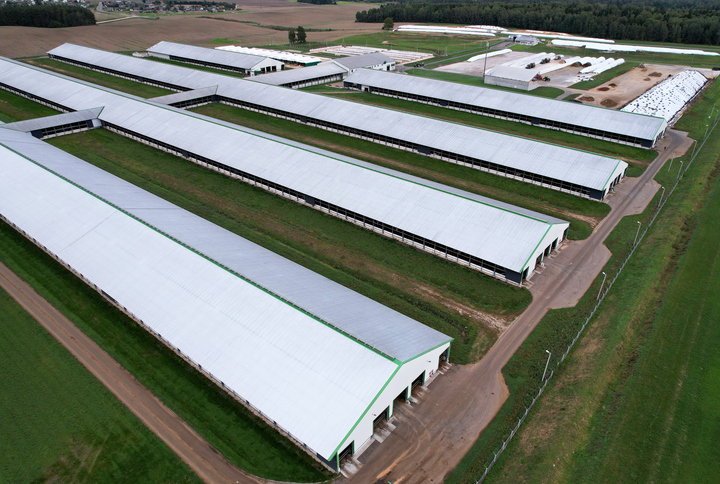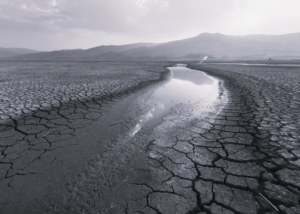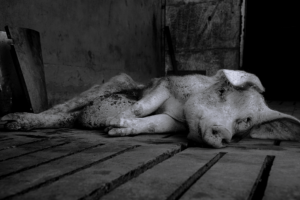Factory farming wears a thin but effective disguise. Because of our appetite for cheap meat, we’re easily taken in by labels with red barns or photos of family farmers with cows on pasture. Adding to the camouflage, and central to any work that attempts to unmask animal ag, are the American traditions that grant agriculture special status in our society.
Agricultural exceptionalism is the term that denotes the long-standing legal and cultural traditions which acknowledge the inherent value of farming and protect family farmers from onerous regulations. This mindset is reflected, for example, in the lack of welfare regulations for farmed animals or in the EPA’s hamstrung efforts to mitigate air and water pollution from concentrated manure. The USDA supports these protections by consistently portraying a food system run by small farmers. In fact, the system is dominated by multi-national corporations, farms with hundreds or thousands of acres of monoculture crops, factory farms with thousands or even millions of confined animals, and enormous slaughterhouses that kill at rates difficult to fathom.
Researchers who study agriculture are apt to offer a paean to the agricultural sector at the beginning of their reports, lest they be viewed as dismissing that special standing or the value of abundant food. Those who do examine the damages from agriculture rarely explore the share of impacts coming from animal ag.
This hinders our efforts to identify solutions since animal ag is always the primary source of U.S. agricultural damages. The math is straightforward, starting with the fact that more than half of our crop acreage is used for animal feed. Then include the manure, nutrient pollution, and various contaminants flowing from factory farms. Add on the impacts of grazing on hundreds of millions of acres.
Whether it’s water pollution, air pollution, biodiversity loss, climate change, or any other subject – the main generator of negative externalities from agriculture is always industrial animal ag.
Since few researchers want to bring agriculture to heel, factory farming, feed crops, and slaughterhouses can hide behind the fiction that our small farmers are feeding the world – even as we now import more food than we export. Ironically, agricultural exceptionalism, the protector of small farms, provides a protective screen for large corporations that systemically degrade our natural world for profit.

This halo effect is even more pervasive among federal agencies which continue to present images of red barns and pastured animals. These pictures are much more palatable than ones showing Cargill’s headquarters, Cal-Maine’s massive egg-laying facilities, Tyson’s transport trucks, or JBS’s enormous slaughterhouses. But this is agriculture in America.

In every category we explore, whether it’s biodiversity, water pollution, air pollution or climate change, most of the reports that explore agriculture’s footprint make no mention of factory farms and feed crops, thereby ignoring the heart of American agriculture.
One result of agriculture’s special protection is that it is challenging to tease out animal ag’s impacts from incomplete or sparse information. And so we have great appreciation for the small subset of researchers, non-profits, journalists, and government officials who document the hard facts behind the disguise. Without them, animal ag’s informational screen would be too dense to penetrate.





